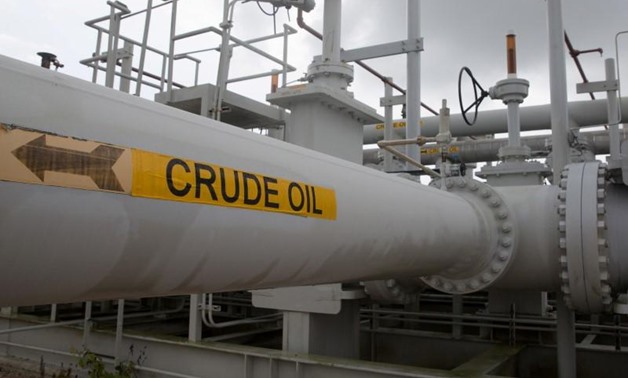
A maze of crude oil pipes and valves is pictured during a tour by the Department of Energy at the Strategic Petroleum Reserve in Freeport, Texas, U.S. June 9, 2016. REUTERS/Richard Carson
TOKYO/SINGAPORE - 30 May 2019: Oil prices rose on Thursday after an industry report showed a bigger-than-expected decline in U.S. crude inventories, although concerns that the U.S.-China trade war will trigger an economic downturn kept a lid on gains.
Brent crude futures, the international benchmark for oil prices, were at $69.85 per barrel at 0700 GMT, up 40 cents, or 0.6%, from their last close. Brent fell nearly 1% in the previous session.
U.S. West Texas Intermediate (WTI) crude futures were up 48 cents, or 0.8%, at $59.29 a barrel.
U.S. crude inventories fell by 5.3 million barrels in the week to May 24 to 474.4 million barrels, data from industry group the American Petroleum Institute showed on Wednesday.[API/S]
Official data from the Energy Information Administration (EIA) is due on Thursday at 1500 GMT. [EIA/S]
Outside the United States, oil prices remain supported by output cuts from the Organization of the Petroleum Exporting Countries (OPEC) and other major producers as well as falling supplies from Iran.
Iranian May crude exports dropped to less than half of April levels at around 400,000 barrels per day (bpd), tanker data showed and two industry sources said, after the United States tightened sanctions on Tehran’s main source of income.
Many analysts expect the OPEC-led supply cuts to be extended in a meeting to be held either late June or early July as OPEC’s de-facto leader Saudi Arabia wants to prevent oil prices falling back to levels seen in late 2018 when Brent slumped to $50 per barrel.
Since OPEC and its allies started withholding supply in January, oil prices have risen by about 30 percent.
DEMAND SLOWDOWN
Preventing prices from rising further are concerns that the trade dispute between the United States and China will trigger a global economic downturn and a slowdown in fuel consumption.
“An escalating U.S.-China trade war represents a risk to oil markets,” Bernstein Energy said in a note on Thursday.
“The IEA has lowered their demand estimate for 2019 to 100.4 million barrels per day (1.3% year-on-year) and we see the possibility of further negative demand revisions ahead,” Bernstein said. “Under a full-blown trade war scenario, demand growth could be cut in half to 0.7% (year-on-year).”
Because of weakening demand, Bernstein said “any upside is capped” in oil markets despite relatively tight supply.
In China, refined fuel consumption dropped 2.4% in April from a year earlier, to 27.06 million tonnes, the National Development and Reform Commission said on Thursday.

Comments
Leave a Comment